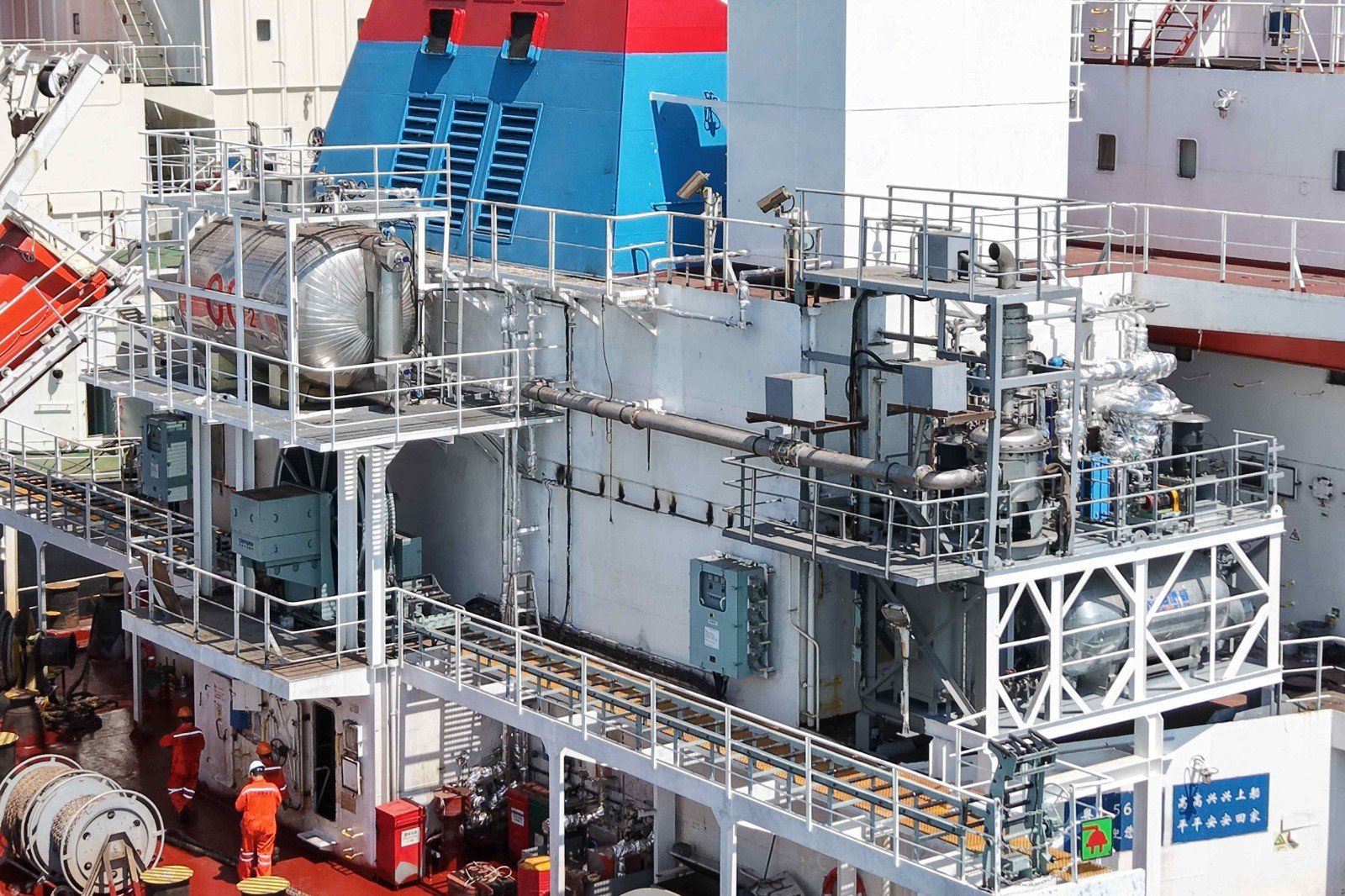OceanGuard® Onboard Carbon Capture System
OceanGuard® Onboard Carbon Capture System, independently developed, designed, and manufactured by Headway, integrates advanced carbon absorption & desorption, liquefaction, and liquid CO₂ (LCO₂) storage capabilities. Leveraging Headway’s featured high-speed centrifugal carbon capture technology and high-performance absorber, the system achieves a carbon capture rate exceeding 90% with CO₂ purity of at least 99.6%. By replacing conventional gravity-based scrubbers with a centrifugal force field, the OCCS significantly enhances contact efficiency, reduces energy consumption, and enables a compact, easily integrated design that simplifies installation and CO₂ transportation.
- INTRODUCTION
- SOLUTIONS
- Online Inquiry

MEPC 80 sets the "2023 IMO Strategy on Reduction of GHG Emissions from Ships", with two key milestones for achieving net-zero emissions:
1. By 2030, reduce shipping greenhouse gas emissions by at least 20% compared to 2008 levels, striving for 30%;
2. By 2040, reduce shipping greenhouse gas emissions by at least 70% compared to 2008 levels, striving for 80%.

OceanGuard® Onboard Carbon Capture System, independently developed, designed, and manufactured by Headway, integrates advanced carbon absorption & desorption, liquefaction, and liquid CO₂ (LCO₂) storage capabilities. Leveraging Headway’s featured high-speed centrifugal carbon capture technology and high-performance absorber, the system achieves a carbon capture rate exceeding 90% with CO₂ purity of at least 99.6%. By replacing conventional gravity-based scrubbers with a centrifugal force field, the OCCS significantly enhances contact efficiency, reduces energy consumption, and enables a compact, easily integrated design that simplifies installation and CO₂ transportation.


With intelligent design, the Headway OCCS can autonomously adjust the carbon capture rate based on the ship's operational status and EEXI and CII calculation to maximize the operation period of the system. In addition, based on different ships’ characteristics, Headway tailors every design to fit your ship's space.




There, Headway will utilize the CO₂ in its innovative sustainable fuel synthesis projects, incorporating advanced AEM hydrogen generation and solid-state hydrogen storage technologies to produce hydrogen, to synthesis sustainable methanol and ammonia. This integrated approach creates a closed-loop green lifecycle for carbon.



Enhanced by the High-Speed Centrifugal Decarburization Technology, OceanGuard® Onboard Carbon Capture System(OCCS)adopts the high centrifugal field generated by the hyper-speed rotating to replace the gravity field in conventional solutions. The technology provides better contact between gas and liquid and dramatically increases the mass transfer rate.
Empowered by digital modeling and flow field analysis, Headway established models for the liquid holdup, effective contact area, liquid/solid contact surface, and liquid dispersion based on the flow characteristics and dynamic variation of liquid drops. The research provides theoretical support for the experimental research and technology improvement.




